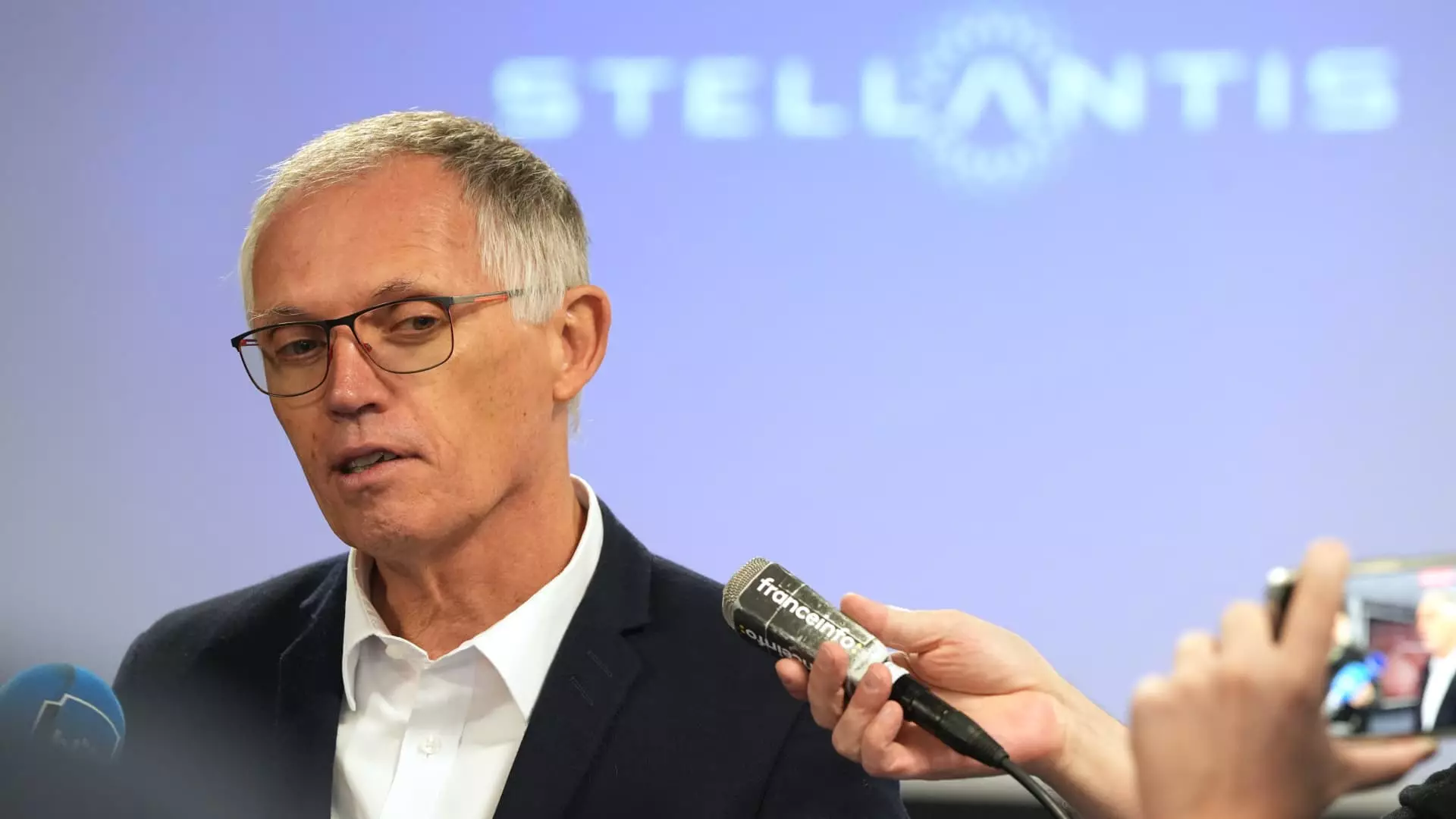The recent resignation of Carlos Tavares as CEO of Stellantis has shocked industry observers and insiders alike. Once heralded for successfully orchestrating the merger between Fiat Chrysler Automobiles and PSA Groupe, Tavares’ departure raises questions about the internal dynamics of the world’s fourth-largest automaker. According to the company, the resignation resulted from increasingly divergent views between Tavares and the board of directors, a scenario that spellbinds both investors and analysts. The shift at the helm is not only emblematic of internal strife but also highlights broader challenges facing the automotive industry.
As Stellantis embarks on the search for a new CEO—a process the board claims is already underway—one cannot help but wonder how the leadership transition will affect both company morale and stakeholder confidence. The immediate establishment of an interim executive committee under Chairman John Elkann signals a grave situation, as the company tries to stabilize its operations in the wake of such unexpected turbulence.
Tavares was widely recognized for developing Stellantis into a formidable player in the automotive landscape. He brought significant experience to the table, having previously been the board chair of PSA Groupe and a protege of the controversial Carlos Ghosn at Nissan. Yet, despite these accolades, the company’s financial performance has recently faltered. Stellantis has battled against underwhelming revenue predictions, attributed primarily to mismanagement within its most lucrative market—the United States.
In September, Stellantis slashed its annual guidance, revealing a staggering 27% drop in third-quarter net revenues. This decline was attributed to a series of missteps, including a lack of fresh product investments and extraordinarily high prices, which led to a steep drop in sales. Over the third quarter, the company witnessed a nearly 20% decrease in global vehicle sales, a dismal scenario that deepened investor concerns.
One of Tavares’ hallmark strategies has been aggressive cost-cutting across Stellantis’ diverse portfolio of brands, which also includes Dodge, Fiat, and Chrysler. He claimed to have realized over €8.4 billion (approximately $9 billion) in savings since the merger. However, this initiative has come under fire from multiple fronts. Reports from both current and former executives of Stellantis indicated that the cost-saving measures had become excessive, leading to operational challenges particularly in the U.S. market.
Public sentiment within the company is revealing; layoffs and production cuts have stirred discontent among the United Auto Workers union, which has been vocal about its dissatisfaction with Tavares’s leadership. With Stellantis’ U.S.-traded shares plummeting approximately 43% in 2024, stakeholders are understandably anxious about the company’s future trajectory.
The discontent among Stellantis employees and its dealership network cannot be overstated. Unions and dealership representatives have criticized Tavares for insufficient support during difficult times, particularly when faced with industry-wide challenges like bloated inventories. The tensions have culminated in public calls for Tavares’s ousting, framed as necessary actions in light of escalating layoffs and plant closures.
Given this backdrop, the urgency for a new leadership vision becomes even more pronounced. The board’s decision to accept Tavares’ resignation suggests an acknowledgment of deep-rooted issues that go beyond a mere difference of opinion. It raises the question: what characteristics should the next CEO possess to navigate these turbulent waters?
As Stellantis digs deep into the search for new leadership, the selection process must rigorously focus on adaptability and a commitment to reinvigorating the brand. The incoming CEO will need to prioritize not just financial recovery but also employee morale, dealer relationships, and product innovation. A collaborative leadership approach that seeks alignment with the board and stakeholders at every level will be essential for restoring confidence.
With the automotive industry in a period of transformative change—marked by shifts toward electric vehicles and heightened competition—the next chapter for Stellantis could very well determine its survival in an increasingly cutthroat landscape. The resignation of Carlos Tavares may indeed be a painful transition, but it also presents an opportunity for renewal and realignment with contemporary challenges, ultimately steering Stellantis towards a brighter future.


Leave a Reply